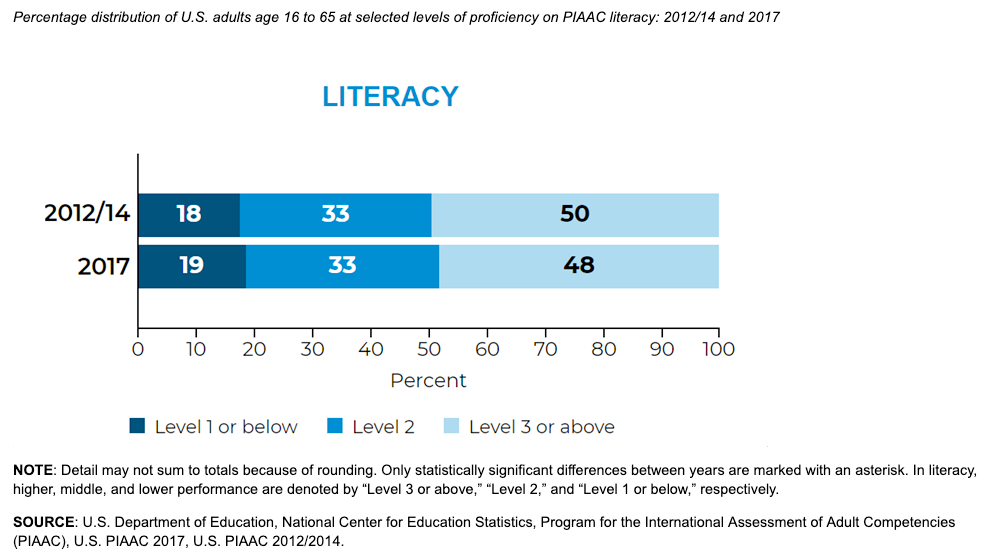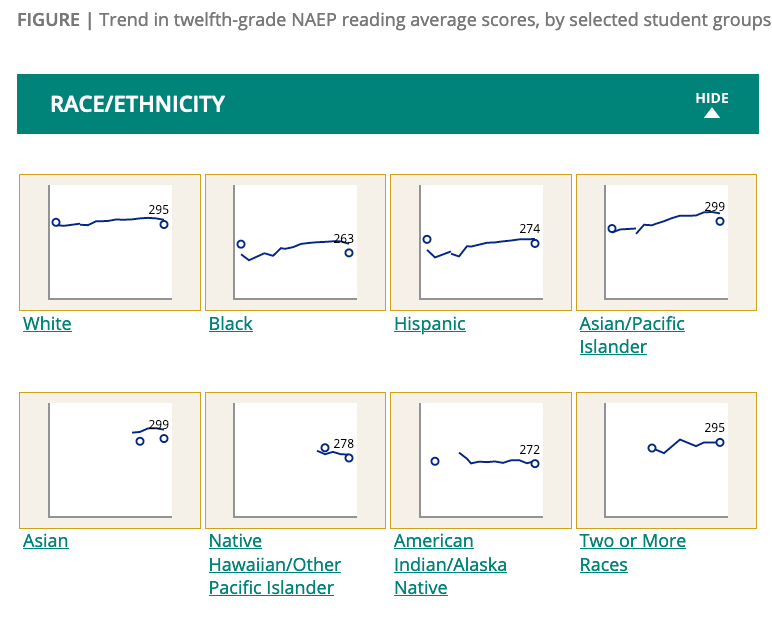A Quiet & Destructive Illiteracy Crisis
Adult and child illiteracy rates, especially in low-income populations, are already too high. Imagine what the pandemic is doing to that ...
a #BlackEdChat feature
It’s not a prominent headline as it should be, but America is facing an illiteracy crisis. As if there aren’t enough crises to manage already. But, the crisis of illiteracy - particularly adult functional illiteracy - is a problem that eats away at the very core of any civic society struggling to achieve a democratic normalcy. If a nation’s people cannot read, how do they contribute to society? How productive can they be? Employers aren’t in the habit of employing illiterate employees, and those who are functionally illiterate (who are able-bodied, but can’t read) have effectively locked themselves out of most, if not all, marketplaces. If that’s happening at a mass scale, that’s a recipe for broader societal breakdown.
Yet, currently, an estimated 54 percent of adults between the ages of 16 to 65 are reading below a 6th grade level - nearly 20 percent of that number are at “the lowest levels of literacy,” according to U.S. Department of Education data. In fact, the number of adults reading above a 6th grade level actually declined by two percentage points between 2014 and 2017. A deeper glimpse into these numbers show a crisis brewing at an exponential rate policymakers either continue to ignore or are aware of yet fail to highlight.
The State of Adult Literacy
The National Center for Education Statistics shows …
The United States is just several points above the international reading proficiency average - but, one wonders what this picture will look like after the pandemic. Achievement gaps are widening as families and households unable to adapt to the coronavirus environment, economically and academically, are finding themselves crushed by ill-equipped school systems …
Literacy Rates By State & County
Here’s a look at where illiteracy is more intense by state, based on NCES data. Generally speaking, we see high literacy in the North to Northwest and lower literacy in the South to Southwest …
The bottom 25 percent states share similar demographic characteristics in that they are places containing the highest concentrations of Black and Latino populations. Five of the bottom 25 percent states - Texas, Florida, New York, Georgia and California - are the top 5 ranked states with the highest Black population totals. Four of the bottom 25 percent states - California, Texas, Florida, New York - are the top 4 ranked states with the highest Latino population totals. A racial pattern emerges as we look at Top 10 and Bottom 10 in terms of counties …
Adult Literacy Rates by Race
Here’s what’s found in the last Program for the International Assessment of Adult Competencies (PIAAC) report from 2016 (examining 2012 to 2014 data) …
While White “low English literacy” rates are high, they’re not high compared to their overall percentage or proportion of the U.S. population. However, the rates are very disproportionate and troubling among Black and Latino adults.
Reading Achievement Gaps
Let’s take a look at the latest reading proficiency data by race from the National Assessment of Educational Progress (NAEP) Nation’s Report Card. This will show reading proficiency scores at 4th, 8th and 12th grade …
Across all grade levels, Black 4th, 8th and 12th graders are showing the lowest reading proficiency rates compared to their peers in all other major racial demographic groups. We’re getting a sense of how early this starts and begin to ask valid questions about exactly how school systems are addressing this. It’s possible 2020 data will show even worse indicators. A recent Center for American Progress report displays these gaps in a much more vivid and alarming way when comparing Black, White and Latino reading proficiency …
The Cost
A joint Gallup and Barbara Bush Foundation report released in September shows that the economy would actually gain back $2.2 trillion in lost economic growth if illiteracy were eradicated. That figure is approximately 10 percent of national Gross Domestic Product. Here’s what that gain in GDP would look like across various states …
More interesting is income level by literacy level …
powered by …
















